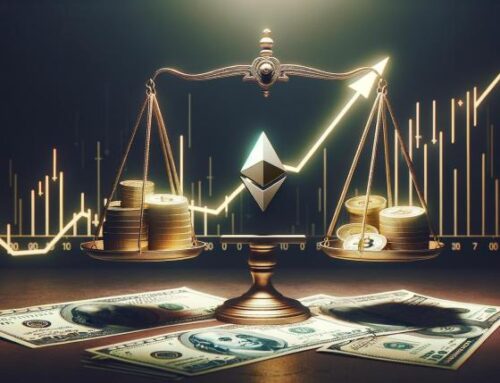Lee administration’s tightrope dance between nuclear power, renewable energy
July 20, 2025
![Industry Minister Kim Sung-whan speaks during his confirmation hearing at the National Assembly in Yeouido, western Seoul on July 15. [LIM HYUN-DONG]](https://koreajoongangdaily.joins.com/data/photo/2025/07/21/6947436c-8aaa-495d-9956-696530e6cb8b.jpg)
Industry Minister Kim Sung-whan speaks during his confirmation hearing at the National Assembly in Yeouido, western Seoul on July 15. [LIM HYUN-DONG]
The energy policy of the Lee Jae Myung administration is expected to place emphasis on balancing nuclear power and renewable energy, with recent ministerial nominees stressing the importance of nuclear power.
This stems from the apparent belief that securing stable electricity is a core national competitiveness in the era of AI.
At his confirmation hearing Thursday, Kim Jung-kwan, minister of trade, industry and energy, pledged to move forward with the construction of two large nuclear reactors and a small modular reactor (SMR) under the country’s 11th Electric Power Supply Basic Plan.
“I believe nuclear power and renewable energy must go together,” Kim said during the confirmation hearing, underscoring the administration’s commitment to a mixed energy strategy.
Earlier in the week, Kim Sung-whan, nominee for minister of environment, echoed the sentiment during his confirmation hearing on July 15, emphasizing the need for a “proper mix” of nuclear and renewable energy sources and said he would not pursue a nuclear phase-out policy.
On new nuclear construction, he said, “Building additional nuclear power plants was decided through the 11th Electric Power Supply Basic Plan during the previous administration,” and added, “Public consensus is necessary, but I believe [new nuclear construction] is inevitable.”
The 11th Electric Power Supply Basic Plan, finalized earlier this year, includes raising the proportion of renewable energy from 10.5 percent last year to 32.9 percent by 2038, and increasing the share of nuclear energy to 35.2 percent from 31.7 percent last year through the construction of two new large reactors and one SMR.
![Kim Jung-kwan, nominee for Minister of Trade, Industry and Energy, speaks during his confirmation hearing at the National Assembly in Yeouido, western Seoul on July 17. [LIM HYUN-DONG]](https://koreajoongangdaily.joins.com/data/photo/2025/07/21/ba9cf81d-3a03-4931-8046-9344de943795.jpg)
Kim Jung-kwan, nominee for Minister of Trade, Industry and Energy, speaks during his confirmation hearing at the National Assembly in Yeouido, western Seoul on July 17. [LIM HYUN-DONG]
“While the Lee administration’s energy policy focuses on expanding renewable energy, it is encouraging that the importance of nuclear power is being re-evaluated,” said Jerng Dong-wook, a professor of energy systems engineering at Chung-Ang University.
In particular, many view Kim Sung-whan’s statement as unexpected, as he had previously supported phasing out nuclear power and has now shifted to endorsing nuclear expansion.
As former mayor of Nowon District in Seoul, Kim had once said, “The nuclear phase-out policy trend is irreversible.”
During the Yoon Suk Yeol administration, he had harshly criticized the nuclear-focused policy, saying, “It doesn’t match global trends and will destroy Korea’s industry and economy.”
However, he explained his change of stance, stating, “During the Moon Jae-in administration, the shock of the Fukushima disaster justified halting nuclear power, but now with the severity of the climate crisis, phasing out coal-fired power generation is more urgent.”
![Members of civic groups hold a press conference at Gwanghwamun Square in Jongno District, central Seoul on July 16 to condemn the remarks of Kim Sung-whan, nominee for Minister of Environment, regarding nuclear plants. [YONHAP]](https://koreajoongangdaily.joins.com/data/photo/2025/07/21/5a1ce7b6-14a1-448c-bad6-305a5973f92b.jpg)
Members of civic groups hold a press conference at Gwanghwamun Square in Jongno District, central Seoul on July 16 to condemn the remarks of Kim Sung-whan, nominee for Minister of Environment, regarding nuclear plants. [YONHAP]
Environmental groups have strongly opposed this, stating that “defending nuclear expansion disqualifies him as environment minister.”
The remarks from the two are seen as reflecting an awareness of the rapidly increasing electricity demand amid the spread of AI and electric vehicles. The Lee administration regards AI as a future growth engine and a top national priority. A stable electricity supply is essential for AI expansion.
The International Energy Agency (IEA) recently projected that global electricity demand will more than double by 2050.
As international pressure mounts to achieve net-zero emissions, the importance of nuclear power — an energy source that produces no carbon emissions — is being emphasized. With the need to sharply reduce fossil fuel-based power generation, such as coal and natural gas, nuclear power is gaining attention as a viable alternative that can provide a large-scale, stable supply with minimal carbon emissions.
![The Hinkley Point C nuclear power station is under construction, near Bridgwater, Britain on July 16. [REUTERS/YONHAP]](https://koreajoongangdaily.joins.com/data/photo/2025/07/21/eb391c9b-87ac-4ef8-bd4c-e9677c71488d.jpg)
The Hinkley Point C nuclear power station is under construction, near Bridgwater, Britain on July 16. [REUTERS/YONHAP]
The IEA also stressed that nuclear power generation must at least double by 2050 compared to current levels.
The shift from nuclear phase-out to expansion is a global trend. A total of 307 new reactors have been proposed globally by governments and other entities, according to the World Nuclear Association (WNA). When 109 reactors currently planned or under licensing procedures are included, the number exceeds 400.
In addition, with U.S. President Donald Trump recently announcing a plan to quadruple nuclear capacity to 400 gigawatts by 2050, the total number of planned nuclear reactors could reach as many as 700. Considering the 439 reactors currently in operation and 67 under construction, global nuclear capacity is expected to expand to 2.5 times the current level.
European countries that had pursued a nuclear phase-out are also returning to nuclear expansion. The Russia-Ukraine war has heightened the importance of energy security. Germany, Finland and Belgium, which had moved away from nuclear power, have shifted their policies, while France and Britain, which operate nuclear power plants, are investing in new reactors.
![The Kori-1 nuclear reactor, Korea's first commercial nuclear power plant, in Busan, is seen on June 26. [NEWS1]](https://koreajoongangdaily.joins.com/data/photo/2025/07/21/f3fc2495-8d2c-4ce1-88a0-3131e45b0f2f.jpg)
The Kori-1 nuclear reactor, Korea’s first commercial nuclear power plant, in Busan, is seen on June 26. [NEWS1]
However, for the nuclear policy direction outlined by the Industry Minister and the nominee of the Environment Ministry to be properly realized, issues related to the creation of a new Ministry of Climate and Energy — one of Lee’s campaign pledges — must be resolved. The direction of nuclear policy could vary depending on the structure of the new organization.
During the presidential campaign, Lee promised to establish a command center by integrating climate change response and energy policy functions, which are currently divided between the Industry Ministry and the Environment Ministry.
Kim Sung-whan stated that the establishment of a Ministry of Climate and Energy would be “one of the first tasks if I become minister,” and said there are two options: one is to merge the energy functions of the Environment and Industry ministries into a “Ministry of Climate, Environment and Energy,” and the other is to create a new ministry by separating climate policy from the Environment Ministry and energy from the Industry Ministry.
It is also known that within the Environment Ministry, a plan is being considered to split the energy sector and only transfer some functions, such as renewable energy, to the ministry.
However, Kim Jung-kwan effectively expressed opposition to parts of the Industry Ministry being incorporated into another ministry, saying, “Industry and energy are inextricably linked.”
Translated from the JoongAng Ilbo using generative AI and edited by Korea JoongAng Daily staff.
BY KIM WON [[email protected]]
Search
RECENT PRESS RELEASES
Related Post




